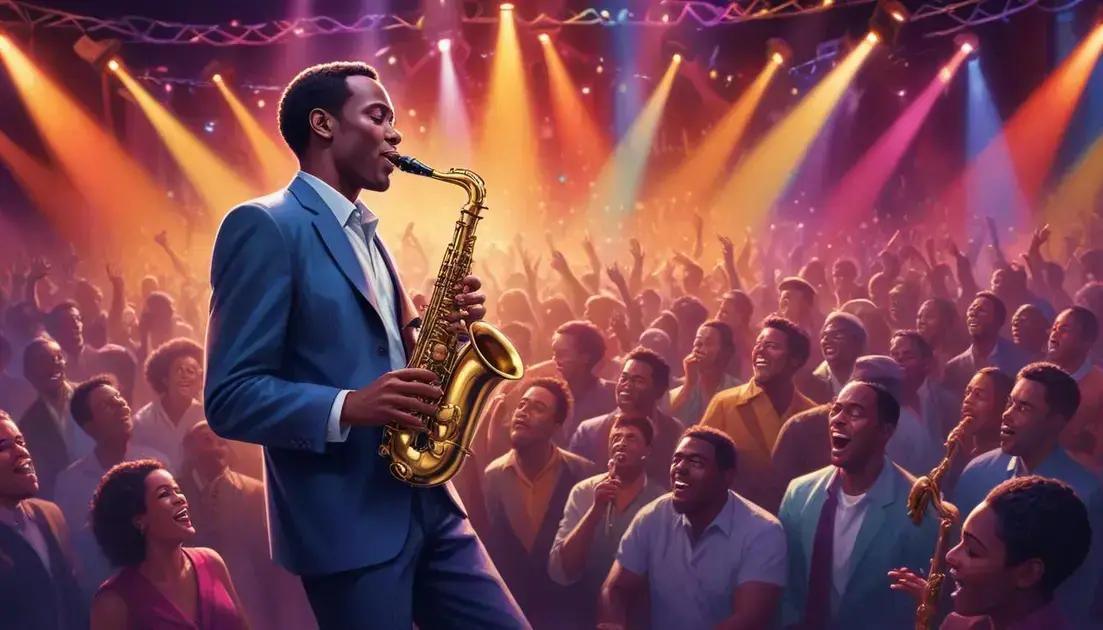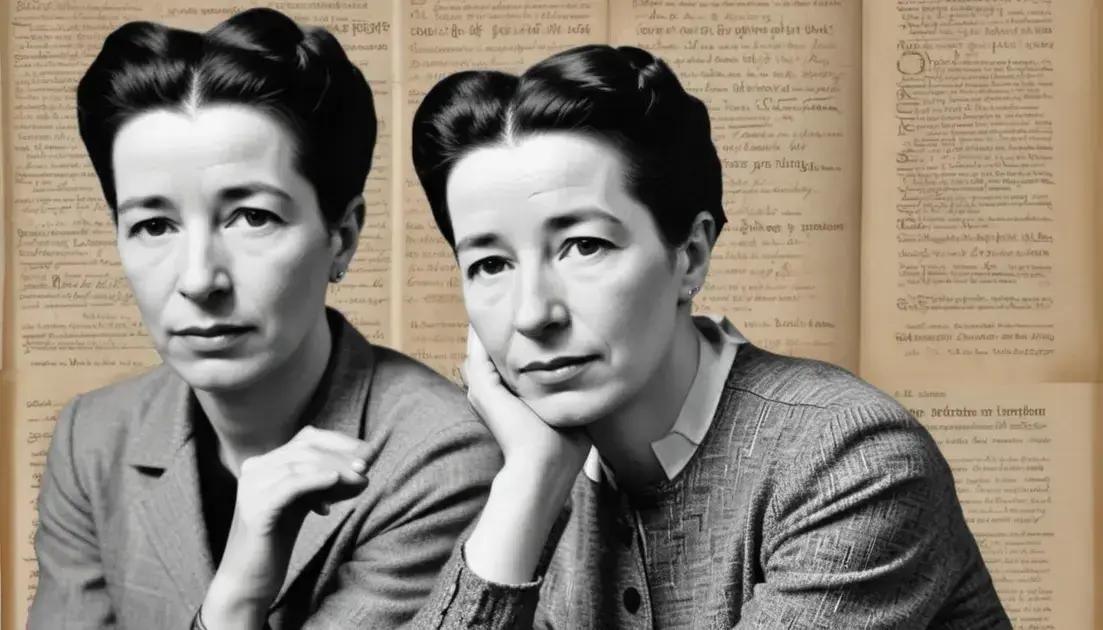
Jazz: The Sound of Resistance and Freedom
Jazz is a dynamic music genre that continually evolves, blending traditional elements with modern influences. Iconic musicians like Louis Armstrong, Duke Ellington, and Miles Davis have shaped its diverse sound. Today, jazz integrates various styles, appealing to younger audiences and fostering global connections through festivals and social media. The ongoing innovation in jazz showcases its enduring relevance and ability to inspire creativity across generations.
Jazz is more than just music; it’s a powerful statement of freedom and expression that resonates through the ages. Are you ready to explore its rich history?
The Origins of Jazz
The origins of jazz are deeply rooted in African American history. It began in the late 19th and early 20th centuries in New Orleans. Here, diverse cultures blended together. African, European, and Caribbean influences shaped the music we know today.
Jazz started in the streets, in dance halls and parades. Musicians took the rhythms from African traditions and mixed them with European harmonies. This unique combination created something fresh and exciting.
Storytelling is also a big part of jazz. Musicians express their feelings and experiences through their instruments. Each note can tell a story or convey an emotion. This improvisation is what makes jazz so special.
New Orleans is often called the birthplace of jazz. The vibrant city was full of creativity. Musicians would gather to play music, share ideas, and learn from each other.
One of the key elements of jazz is its rhythm. Syncopation and swing are essential features. They give jazz its lively feel and set it apart from other music genres. It’s this energy that draws people in, making them want to dance.
As jazz evolved, it spread across the United States. It influenced many other genres, like blues and rock. Iconic musicians like Louis Armstrong and Duke Ellington played a huge role in popularizing jazz. Their innovative styles inspired countless artists around the world.
Today, jazz continues to thrive, blending with modern genres. Its roots are celebrated by many, reminding us of the rich history and cultural significance behind it.
Jazz as a Symbol of Resistance
Jazz has always been more than just music. It stands as a powerful symbol of resistance. During hard times, jazz provided a voice for those who felt unheard. Musicians used their talents to express struggles and dreams.
The roots of jazz are tied to the African American experience. It reflects the fight for equality and freedom. Early jazz musicians often faced injustice. Their music gave them a way to push back and reclaim their identity.
In the 1920s, jazz flourished during the Harlem Renaissance. Artists like Duke Ellington and Louis Armstrong showcased their talent. They inspired many with their creativity and passion. Jazz became a voice for change, encouraging people to challenge the status quo.
Lyrics often told stories of hardship. They expressed feelings of pain, hope, and resilience. Songs became anthems for the civil rights movement. They inspired many to join the fight for justice and equality.
Jazz clubs became safe spaces for expression. Musicians and audiences came together to share their experiences. In these spaces, racial barriers began to blur. Jazz encouraged connections and camaraderie among different communities.
Even today, jazz continues to inspire social change. Modern artists still address issues of justice in their music. They keep the tradition alive, reminding us that jazz is a lasting symbol of resistance.
The Evolution of Jazz
The evolution of jazz has been a fascinating journey. It started in New Orleans but quickly spread across the country. As it grew, jazz absorbed many influences and styles.
In the 1930s, the swing era took off. Big bands became popular, playing danceable rhythms. Musicians like Benny Goodman and Count Basie led the way. Their lively tunes made jazz a national sensation.
Next came bebop in the 1940s. Bebop was faster and more complex. Musicians like Charlie Parker and Dizzy Gillespie pushed boundaries. They focused on improvisation and intricate melodies, making jazz more artistic and expressive.
In the 1950s, cool jazz emerged. This style was smooth and relaxed. Artists like Miles Davis and Chet Baker introduced softer sounds. They created music that felt calm and introspective.
Jazz continued to evolve in the 1960s with free jazz. This style broke away from traditional structures. Musicians like John Coltrane and Ornette Coleman explored new sounds and ideas. Their music challenged listeners to think differently.
Fusion jazz appeared in the 1970s. It mixed jazz with rock and funk. Artists like Herbie Hancock and Chick Corea blended styles, creating fresh and innovative sounds. This opened up new possibilities for jazz.
Today, jazz is still evolving. Modern musicians blend it with hip-hop, electronic, and world music. Artists keep pushing boundaries, ensuring jazz remains vibrant and relevant.
Influences and Innovations in Jazz
Influences and innovations in jazz have shaped its unique sound over the years. Many cultures contributed to the rich history of jazz music. African rhythms and European musical traditions mixed together, creating something truly special.
One major influence was blues music. Blues singers shared stories of sorrow and hardship. Jazz musicians adopted these emotional expressions in their music. This helped jazz connect with people on a deeper level.
Another influence came from the Caribbean. Genres like calypso and rumba added fresh rhythms and styles. Musicians began to experiment, creating new forms of jazz that combined various elements.
Innovative jazz artists pushed boundaries to explore new sounds. The use of technology changed jazz as well. Electric instruments, synthesizers, and recording techniques allowed for new styles like jazz fusion.
The incorporation of elements from rock and pop music caught listeners’ attention. Artists broke away from traditional structures and created their own paths. This led to a more diverse and dynamic jazz scene.
Improvisation has always been a key part of jazz. Musicians often take turns expressing their ideas on the spot. This gives jazz its spontaneous and lively feel. Each performance is unique and showcases individual creativity.
As jazz continues to evolve today, artists draw from various genres. They mix hip-hop, electronic music, and world rhythms into their work. This innovation keeps jazz fresh and relevant for new audiences.
Iconic Jazz Musicians
Iconic jazz musicians have shaped the sound and history of jazz music. These artists brought unique styles and pushed boundaries. They left a lasting impact on the genre and inspired future generations.
One of the most famous jazz musicians is Louis Armstrong. Known for his amazing trumpet skills and unique voice, Louis brought joy to audiences everywhere. His improvisation set a standard for jazz musicians.
Duke Ellington was another legendary figure. As a composer and bandleader, he blended different musical styles. Duke’s big band created beautiful and complex music that still resonates today.
Charlie Parker, also known as “Bird,” introduced a new sound with bebop. His fast tempos and intricate melodies changed jazz forever. Charlie’s creativity encouraged other musicians to explore new directions.
Miles Davis was a major innovator in jazz. His album “Kind of Blue” is one of the best-selling jazz records of all time. Miles constantly experimented with styles, merging jazz with rock and funk.
Another influential artist is Ella Fitzgerald. Known as the “First Lady of Song,” she dazzled audiences with her incredible voice. Ella’s ability to improvise made her a standout performer in jazz.
These iconic musicians, along with many others, continue to influence jazz today. Their contributions have helped jazz evolve and stay relevant in modern music.
Jazz in Today’s World
Jazz in today’s world is vibrant and evolving. While it has deep roots in history, jazz continues to stay relevant. Modern artists blend traditional styles with new influences. This keeps jazz fresh and exciting for listeners.
Many contemporary musicians explore different genres. They mix jazz with hip-hop, electronic, and pop music. This fusion attracts younger audiences. Artists like Kamasi Washington and Esperanza Spalding are prime examples of this trend.
Festivals around the world celebrate jazz. Events like the New Orleans Jazz & Heritage Festival draw large crowds. These festivals showcase both established and emerging talent. They provide a platform for new artists to shine.
Jazz education has also grown. Many schools teach jazz history and performance. Workshops help students learn from experienced musicians. This encourages the next generation to embrace jazz.
Social media has changed how we experience jazz. Sites like YouTube and Instagram allow artists to share their music easily. Fans can connect with musicians from all over the world. This creates a global community of jazz lovers.
Jazz may have started in the past, but its future looks bright. With new sounds and ideas, it remains a powerful form of expression. The spirit of jazz continues to inspire creativity and innovation today.
Conclusion
In conclusion, jazz remains a vital part of our culture. Its journey from the past to the present shows its ability to evolve. Today, jazz blends with many genres, attracting new fans and inspiring young musicians.
Iconic artists have shaped jazz and continue to influence it. Their creativity ensures that jazz stays fresh and relevant. Festivals and education play important roles in keeping jazz alive and vibrant.
As we embrace the future, jazz will keep inspiring and connecting people. Its power lies in its ability to adapt while staying true to its roots. So, whether you’re a long-time fan or a newcomer, jazz has something special to offer everyone.


